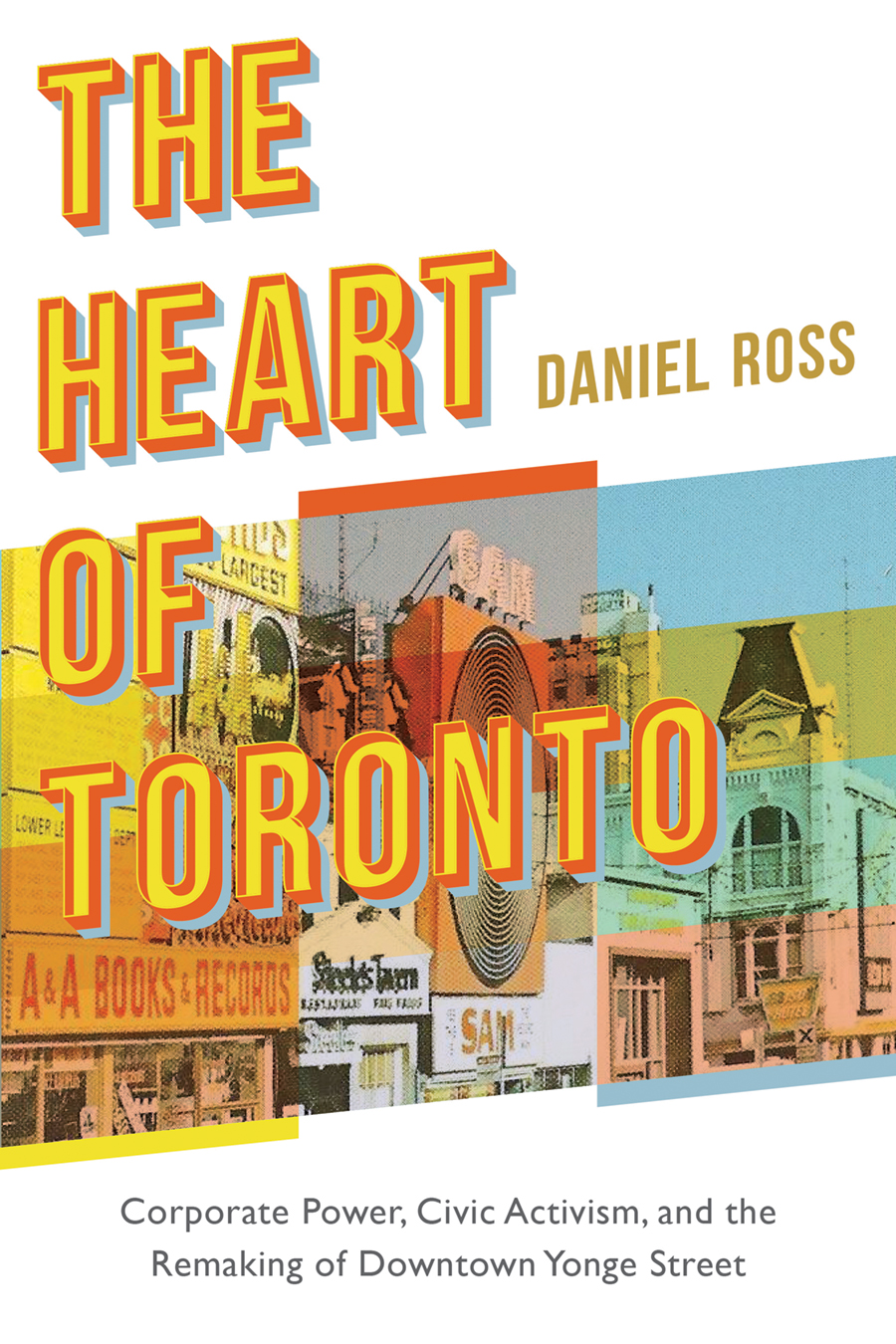
The Heart of Toronto
The Heart of Toronto: Corporate Power, Civic Activism, and the Remaking of Downtown Yonge Street
Cover of “The Heart of Toronto” by Daniel Ross, 2023 Heritage Toronto Book Award nominee. Cover design by Martyn Schmoll.
Winner: 2023 Book Award
Author: Daniel Ross
Publisher: The University of British Columbia Press
Downtown Yonge Street was at the centre of efforts to reinvent downtown to keep pace with urban change. These included the street’s conversion into a car-free “people’s freeway”, a clean-up campaign targeting the sex industry, and the construction of the Eaton Centre complex. Debates over these projects brought a wide range of historical actors into dialogue and conflict, sometimes in unexpected ways. Environmental activists and small businesses worked together on summer pedestrian malls; a progressive mayor found himself leading (and then trying to tame) a populist backlash against nude massage parlours; heritage conservationists and other well-organized citizen activists forced Canada’s largest real estate developer to significantly change its plans for the street. The debates of the postwar decades refashioned downtown Yonge Street’s built form, functions, and meanings, and they continue to influence the city’s development today.
The Heart of Toronto tells the story of these projects, their successes and failures, and their connections to larger trends in the city and society. Moving from the sidewalk to City Hall, and from corporate boardrooms to suburban kitchens, it widens our understanding of the actors, ideas, and power dynamics that have driven urban change. To do so, it draws on a range of original primary sources, including municipal documents, newspapers, photography, and letters from citizens to Toronto’s public officials.
About the Author:
Daniel Ross is an associate professor in the Department of History at the Université du Québec à Montréal. His research on cities, urban culture, and local politics in Canada has been published in the Urban History Review/Revue d’histoire urbaine, BC Studies, the Bulletin d’histoire politique, and Spacing magazine.
